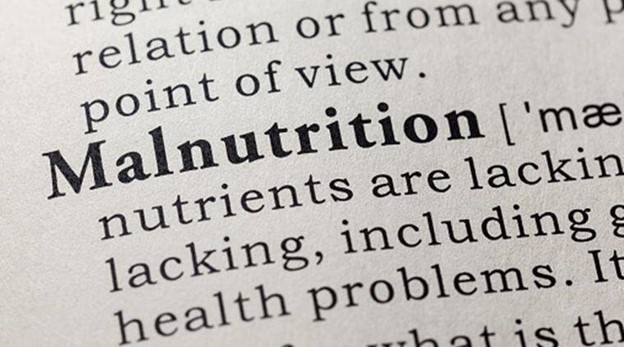by Lakna Wijesinghe
Malnutrition does not always imply hunger or famine, which is the first thought that typically comes to mind. It is manifested in many forms, ranging from hunger to obesity. Malnutrition refers to deficiencies, excesses, or imbalances in a person’s intake of energy and/or nutrients. This results in a measurable adverse effect on body composition, function and clinical outcome. “Triple burden” of all three nutrition problems is becoming a noticeable problem in the world.
The term malnutrition addresses 3 broad groups of conditions:
- Undernutrition: includes wasting, stunting and underweight;
- Over nutrition: includes overweight, obesity and diet-related non-communicable diseases; and
- Micronutrient-related malnutrition: includes micronutrient deficiencies or micronutrient excess.
According to World Health Organization (2021), 1.9 billion adults are overweight or obese, while 462 million are underweight. 47 million children under 5 years of age are wasted, 14.3 million are severely wasted and 144 million are stunted, while 38.3 million are overweight or obese. Around 45% of deaths among children under 5 years of age are linked to undernutrition. Many factors cause malnutrition. Suboptimal diet is one, but other factors also play a role, for example food security, health status, education, social and gender relations, sociocultural, environmental and economic conditions, technology and infrastructure. Currently, undernutrition is a problem that affects developing and industrialized countries, and in both cases, the most economically disadvantaged are those that are most affected.
It is common to find underweight children and obese adults within the same household, in both developed and developing countries. Overweight and obesity have reached epidemic and pandemic levels around the world, in both high- and low-income countries. Overweight and obesity are defined as abnormal or excessive fat accumulation that may impair health. BMI provides the most useful population-level measure of overweight and obesity. However, it should be considered a rough guide because it may not correspond to the same degree of fatness in different individuals. At present, children and young people have become victims of overweight and obesity. This is an alarming fact that needs more attention. The fundamental cause of obesity and overweight is an energy imbalance between calories consumed and calories spent. Globally, there has been an increased intake of energy-dense foods that are high in fat and sugars; and an increase in physical inactivity due to the increasingly inactive nature of many forms of work, changing modes of transportation, and increasing urbanization. Rapid changes in health-related behaviors in recent decades have seen an increase in non-communicable diseases (NCD) prevalence through modifiable lifestyle factors such as diet and physical activity. Some of the NCDs are, cardiovascular disease (coronary heart disease, stroke), chronic lung disease and diabetes. NCDs are the leading causes of death globally, killing more people each year than all other causes combined. Market forces driving down costs of high-calorie fatty, salty and sugary foods have made them cheap and readily available, resulting in increased consumption and expanding waistlines.
Micronutrient deficiencies (MND) are progressive and cannot be identified clinically until they are in their late stages; hence, MNDs are referred to as a “hidden hunger”. Deficiencies in iron, vitamin A and iodine are the most common around the world, particularly in children and pregnant women. Low and middle-income countries bear the disproportionate burden of micronutrient deficiencies. Many of these deficiencies are preventable through nutrition education and consumption of a healthy diet containing diverse foods, as well as food fortification and supplementation, where needed. Values have been set for the intake of each micronutrient. If it is below the required level, a clinical deficiency state can be observed and if it is above, a toxicity state is likely to develop.
It is quite clear that environmental and society status can greatly affect dietary and physical activity patterns of individuals. The lack of supportive policies in sectors such as health, agriculture, urban planning, food processing, distribution and marketing has led to the current state. Therefore, it is the responsibility of government authorities and authorized parties to implement necessary standards and sustainable development goals to overcome this problem. However, it is not solely the responsibility of the above-mentioned parties; every individual is responsible for his or her nutrition intake.

